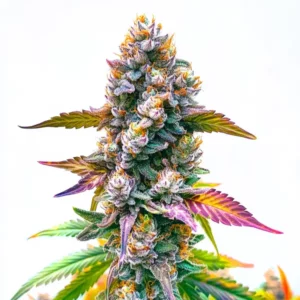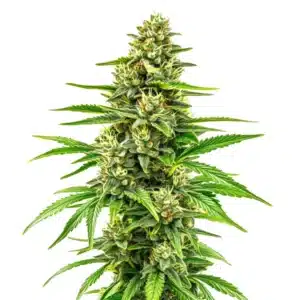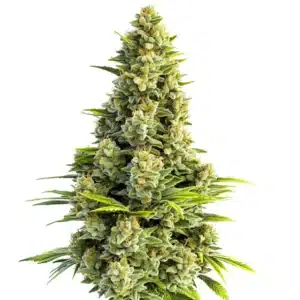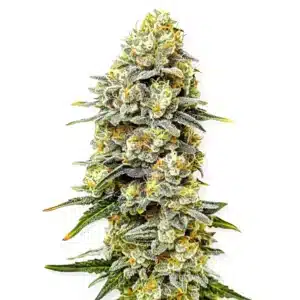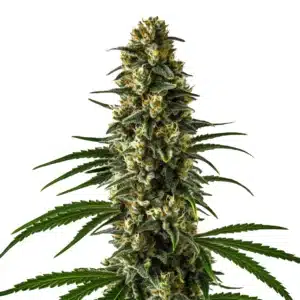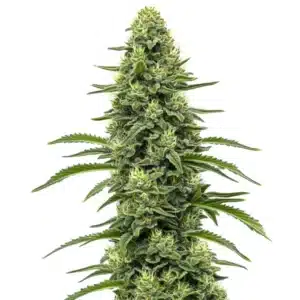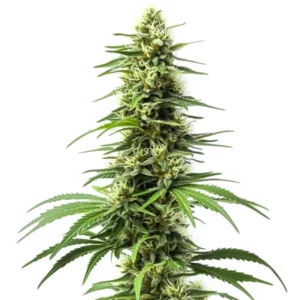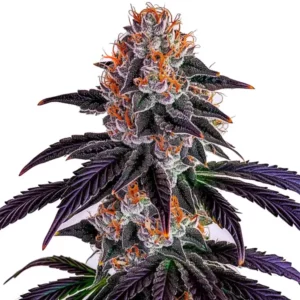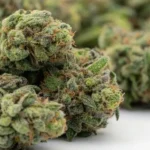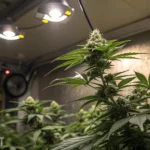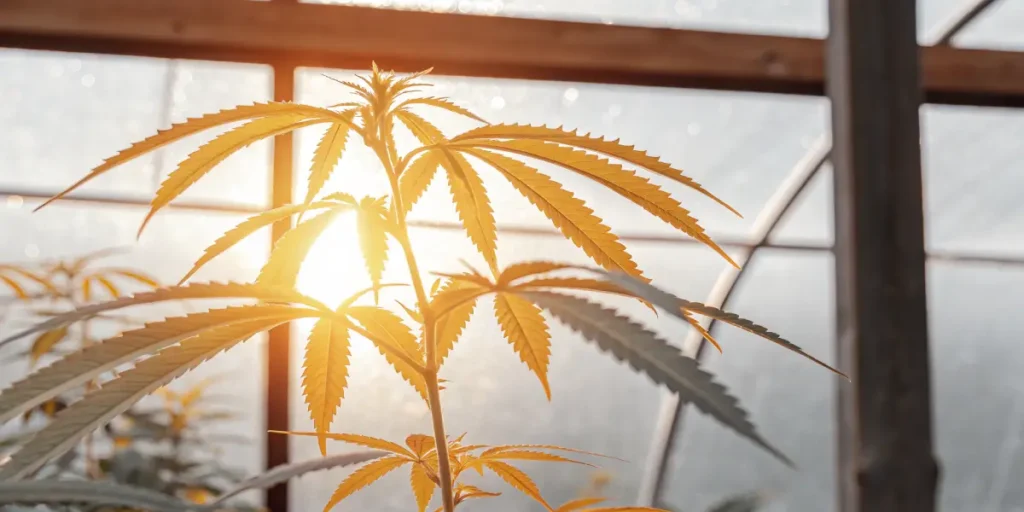
What Causes Cannabis Aroma Volatility
Cannabis aroma volatility can leave growers puzzled. Why does the scent change from plant to plant, or even from day to day? The secret lies in the complex chemical composition of cannabis. This intricate mix of compounds, primarily terpenes, is what gives each strain its unique aroma.
Terpenes are the fragrant oils in cannabis that create its distinctive scents, from citrusy to piney. These compounds not only affect the aroma but also contribute to the plant’s effects. For example, the Blimburn Seeds strain Gorilla Glue 4 is known for its earthy and pungent aroma, thanks to a rich terpene profile.
Recommended Strains
GG4
|
|
THC | 27% (High) |
|
|
Type | Feminized |
|
|
Yield | High |
|
|
Phenotype | 40% Indica / 60% Sativa |
Blue Dream
|
|
THC | 17% - 24% (Medium) |
|
|
Type | Feminized |
|
|
Yield | High |
|
|
Phenotype | 50% Indica / 50% Sativa |
Even experienced growers can find themselves stumped by the volatile nature of cannabis aromas. Small changes in growing conditions can lead to noticeable differences in scent. Knowing what causes cannabis aroma volatility is crucial for both new and seasoned cultivators.
Terpenes: The Scent Makers
Terpenes impact on cannabis aroma significantly. These organic compounds are found in many plants, not just cannabis. In fact, they’re responsible for the scent of lavender, pine, and even fresh oranges. In cannabis, however, they play a central role in determining aroma and flavor.
Each terpene has its own unique scent and potential effects. For instance, myrcene is earthy and musky, while limonene is citrusy. The presence and concentration of different terpenes can drastically alter the aroma profile of a cannabis plant. This variability is one of the key factors affecting cannabis scent volatility.
The role terpenes play extends beyond just scent. They also interact with cannabinoids to influence the overall effect of the cannabis. This interplay is often referred to as the entourage effect. As such, knowing terpenes impact on cannabis aroma can enhance both the sensory and experiential qualities of the plant.
Some terpenes are more sensitive to environmental changes than others, which can lead to shifts in cannabis aroma chemical composition. By recognizing these nuances, growers can better predict and control the aromatic outcomes of their cultivation efforts, leading to a more desirable product.
Environmental Influence on Terpene Production
The environment in which cannabis is grown plays a crucial role in terpene production. Factors such as light, humidity, and nutrients can all affect terpene levels. Growers need to carefully manage these conditions to maintain a consistent aroma.
Temperature is a major player here. High temperatures can cause terpenes to evaporate quickly, reducing their presence in the final product. Cooling things down can help preserve these precious compounds. The influence of temperature on cannabis aroma cannot be overstated. Keeping temperatures stable ensures a more predictable scent profile.
Beyond temperature, the soil composition and nutrient availability can also play a role in terpene output. Rich, well-balanced soil can enhance the plant’s ability to produce and preserve terpenes, improving the overall aroma. This highlights the importance of knowing environmental effects on cannabis aroma.
Light cycles too have a significant bearing on terpene profiles. Proper light exposure, in terms of both intensity and duration, can enhance terpene synthesis, further contributing to factors affecting cannabis scent volatility. Adjusting light conditions to mimic natural environments often yields the most aromatic results.
Promos & Deals
Chemical Composition of Cannabis Aroma
The chemical composition of cannabis aroma is complex. Beyond terpenes, there are other compounds at play. Cannabinoids, for example, can subtly influence aroma. While they don’t have a scent themselves, they interact with terpenes in interesting ways.
Another component to consider is the plant’s genetic makeup. Each strain has its own unique genetic code, which dictates its terpene production. This is why two plants of the same strain can have slightly different aromas. For instance, Blue Dream is a classic strain with a consistent, sweet aroma, but even it can vary based on its growing conditions.
Flavonoids, although less spoken about, are another group of compounds that contribute to cannabis aroma chemical composition. These compounds interact synergistically with terpenes and cannabinoids, influencing both the scent and color of cannabis flowers.
Knowing the full spectrum of aromatic compounds can help growers manipulate conditions to favor the production of specific scents. This knowledge is crucial for creating distinctive, high-quality cannabis products that stand out in the market.
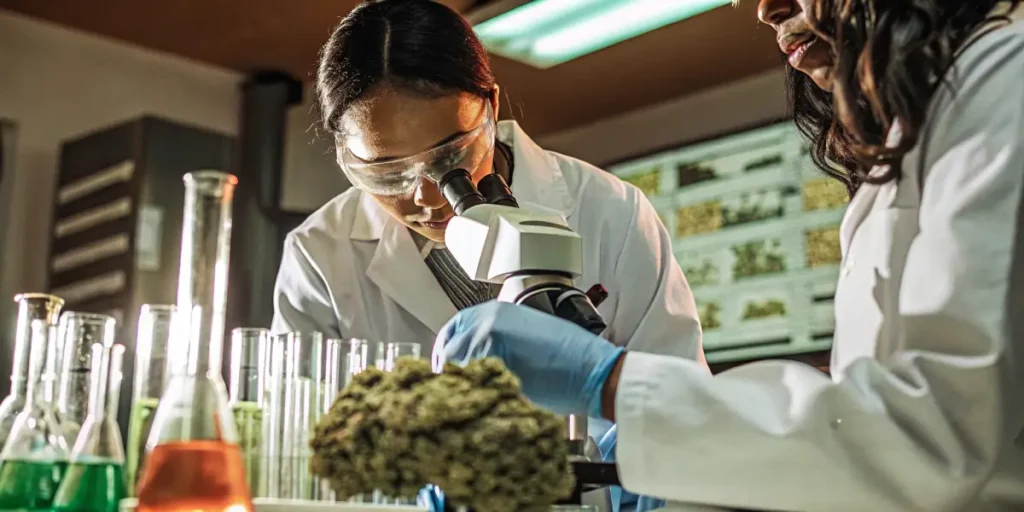
Managing Environmental Effects on Cannabis Aroma
Successful growers pay close attention to environmental effects on cannabis aroma. By knowing and controlling these factors, they can produce plants with consistent and desirable scents. Humidity, light, and air circulation all play a role in terpene preservation.
Light exposure is crucial. Too much light can degrade terpenes, while too little can stunt their production. Finding the right balance ensures that the plant produces a rich and varied aroma. This is especially true for strains like Gorilla Glue 4, where the terpene profile is a major selling point.
Air circulation is another important aspect often overlooked. Good air flow prevents the build-up of excess heat and humidity, both of which can negatively impact terpene stability. This makes it a key part of managing cannabis aroma volatility.
Utilizing tools such as fans and dehumidifiers can help control air quality within the grow area, creating an optimized environment for terpene production and preserving a consistent aroma profile. These practices are essential for maintaining the desired fragrance in the final product.
Practical Tips for Consistent Aroma
Consistency in aroma can be achieved with some straightforward practices. First, choose the right strain. Some strains are known for their stable aroma profiles, making them a safe bet.
Next, focus on the growing environment. Regularly monitor temperature and humidity, and adjust as needed. Using quality soil and nutrients can also support healthy terpene production.
Regular soil testing can provide insights into nutrient levels, allowing for timely adjustments to enhance terpene synthesis. This proactive approach helps maintain a consistent aroma, reducing factors affecting cannabis scent volatility.
Documenting each grow cycle, including environmental conditions and changes made, can also aid in identifying what causes cannabis aroma volatility. This record-keeping helps refine techniques over time, leading to more predictable outcomes.
Real-Life Examples and Tips
Consider investing in environmental control systems. These can automate the process of maintaining the right conditions for your plants. They might seem like a big investment upfront but can pay off in the long run with higher quality yields.
Experienced growers often share tips on forums and in communities. Learning from others’ experiences can provide invaluable insights. For instance, some growers report success with specific nutrient mixes that enhance terpene production.
Real-life experiences suggest that adjusting nutrient levels during different growth stages can fine-tune the aroma. For example, increasing potassium during flowering can boost terpene output, enhancing the scent profile.
Engaging with the grower community not only offers practical tips but also keeps you updated on the latest trends and innovations in managing cannabis aroma chemical composition, ensuring your cultivation practices remain cutting-edge.
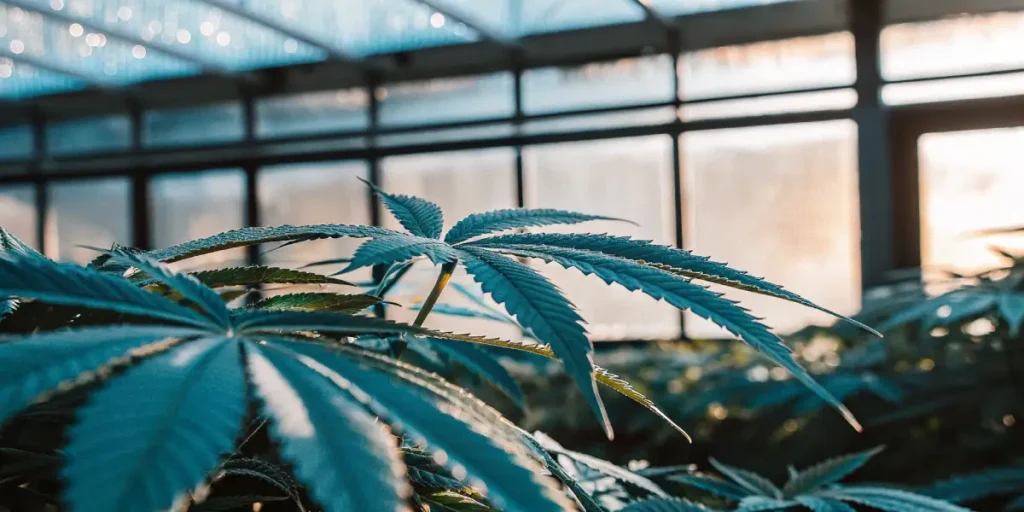
FAQs
What are terpenes, and how do they affect cannabis aroma?
Terpenes are aromatic compounds found in many plants, including cannabis. They are responsible for the wide variety of scents that cannabis can produce, from fruity to earthy. These compounds not only influence the aroma but can also impact the effects of the cannabis itself.
Different terpenes contribute to different scent profiles. For instance, limonene gives a citrusy smell, while pinene offers a pine-like scent. The combination of these terpenes in varying concentrations is what causes cannabis aroma volatility, making each strain unique.
Recognizing the distinct aromas produced by various terpenes can aid in selecting strains that align with desired sensory experiences. This knowing of terpenes impact on cannabis aroma is key for both consumers and cultivators seeking specific effects.
Terpenes can also affect the perception of potency and flavor, adding another layer of complexity to cannabis aroma chemical composition. This makes terpenes a critical focus for those aiming to optimize both scent and user experience.
How does temperature impact cannabis aroma?
Temperature plays a significant role in the preservation or evaporation of terpenes. High temperatures can cause terpenes to evaporate more quickly, leading to a less potent aroma. Conversely, maintaining a cooler environment can help preserve these compounds, resulting in a stronger scent.
Growers need to monitor and control the temperature throughout the growing process. Sudden changes in temperature can disrupt terpene levels, making it crucial to maintain a stable environment for a consistent aroma.
The influence of temperature on cannabis aroma extends beyond the cultivation phase. During drying and curing, maintaining optimal temperatures can prevent terpene loss, preserving the desired aroma profile in the finished product.
Investing in temperature control systems is a practical step toward achieving consistency. These systems can automatically adjust conditions, reducing factors affecting cannabis scent volatility and ensuring a quality aroma in every batch.
Can the environment affect the scent of my cannabis plants?
Yes, the environment can greatly affect the scent of cannabis plants. Factors like humidity, light exposure, and air circulation all play a part in terpene production and preservation. Managing these environmental factors is key to achieving a consistent aroma.
For example, high humidity can lead to mold growth, which can destroy the scent and quality of the cannabis. On the other hand, low humidity might cause the plant to dry out, affecting its aroma. It’s crucial to maintain a balanced environment for optimal results.
Soil quality and nutrient availability are additional environmental aspects that impact aroma. Rich, well-balanced soil supports robust terpene production, enhancing both scent and flavor profiles.
By strategically managing environmental effects on cannabis aroma, growers can mitigate the variability often seen between different cultivation cycles, resulting in a more uniform and desirable product.
Why do two plants of the same strain have different aromas?
Even plants of the same strain can have different aromas due to variations in their growing conditions and genetic makeup. Environmental factors like temperature, humidity, and light can influence terpene production, leading to differences in scent.
Additionally, subtle genetic differences can result in variations in terpene profiles. This is why it’s important to maintain consistent growing conditions to minimize differences and achieve a uniform aroma.
Phenotypic expression plays a role here as well. Minor genetic variations can lead to significant differences in terpene profiles, even among plants of the same genotype. This adds another layer of complexity to what causes cannabis aroma volatility.
Careful selection of mother plants and maintaining stable environmental conditions can help reduce these differences, leading to more predictable and consistent aroma outcomes across grows.
What practical steps can I take to maintain a consistent cannabis aroma?
To maintain a consistent cannabis aroma, start by selecting strains known for their stable scent profiles. Strains like Blue Dream from Blimburn Seeds are a good choice for a reliable aroma.
Focus on controlling your growing environment. Regularly monitor temperature and humidity, and make adjustments as needed. Quality soil and nutrients also support healthy terpene production. Consider using environmental control systems to automate and optimize conditions for your cannabis plants.
Implementing a routine schedule for environmental checks can prevent unexpected changes that might impact aroma. Consistency in these practices is key to maintaining a stable growing environment.
Moreover, staying informed about advances in cultivation technology can provide new tools and strategies for managing cannabis aroma volatility, ensuring you continue to produce high-quality aromatic cannabis.




